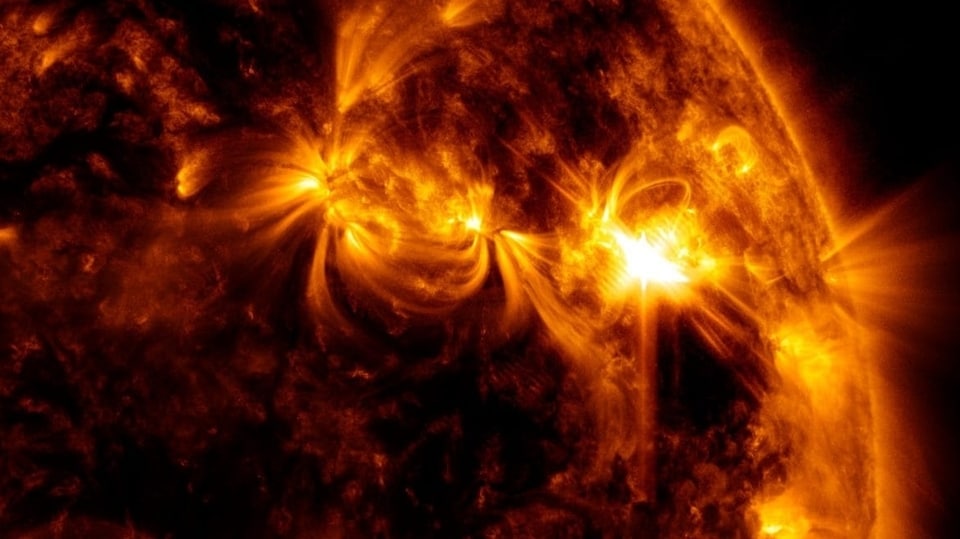Solar storm danger! Unstable sunspot can send horrifying X-Class solar flares towards Earth today
Sunspot AR3165 has become unstable and is set to explode, sparking a solar storm. It can send dangerous X-class solar flares towards the Earth today, December 15.






 View all Images
View all ImagesA massive solar storm may well hit Earth sometime today. Earlier this week, it was reported that a massive region on the Earth-facing side of the Sun was filled with sunspots and magnetic filaments, which make it a highly reactive area prone to explosions. These explosions could throw powerful solar flares and coronal mass ejections (CME) and spark destructive solar disturbances. Now, the fear has come true as one of the sunspots, AR3165, has turned unstable and is cracking crackling with solar flares. The sunspot has already spewed out a medium solar flare last night and now there are chances of an X-class solar flare eruption anytime today, December 15. If it does happen, it can have scary consequences for the Earth. It has already caused a shortwave radio blackout on Earth.
The report came from SpaceWeather.com which noted on its website, “New sunspot AR3165 is crackling with M-class solar flares. The strongest so far, an M6-class explosion (Dec. 14 @ 1442 UT) caused a shortwave radio blackout over the Atlantic Ocean. If current trends continue, the sunspot could produce an X-flare by the end of the day”.
X-class solar flare can hit the Earth today
According to the report, the Earth was already subjected to a shortwave radio blackout last night over the Atlantic ocean region. Thankfully, as the region is directly over water without any human population, the effect of it was limited to ships or airplanes in the region. However, an X-class solar flare can completely change the game.
Not only is an X-class solar flare will have a large spread across the Earth, it is also capable of nightmarish consequences. From damaging satellites, disrupting GPS and wireless communications signals to destruction of the internet and power grids, they can bring the Earth to a halt. These eruptions can also send CME particles towards the Earth and cause further solar storm events. Right now, it is not possible to assess exactly when this sunspot may actually explode and how intense the resultant solar flare can be but the National Oceanic and Atmospheric Administration (NOAA) is keeping a close eye for any new developments.
How NOAA keeps an eye on the Sun
NOAA monitors the solar storms and Sun's behavior using its DSCOVR satellite which became operational in 2016. The recovered data is then run through the Space Weather Prediction Center and the final analysis is prepared. The different measurements are done on temperature, speed, density, degree of orientation and frequency of the solar particles. Another Sun watcher is the Parker Solar Probe, which is also managed by NASA .
Catch all the Latest Tech News, Mobile News, Laptop News, Gaming news, Wearables News , How To News, also keep up with us on Whatsapp channel,Twitter, Facebook, Google News, and Instagram. For our latest videos, subscribe to our YouTube channel.































